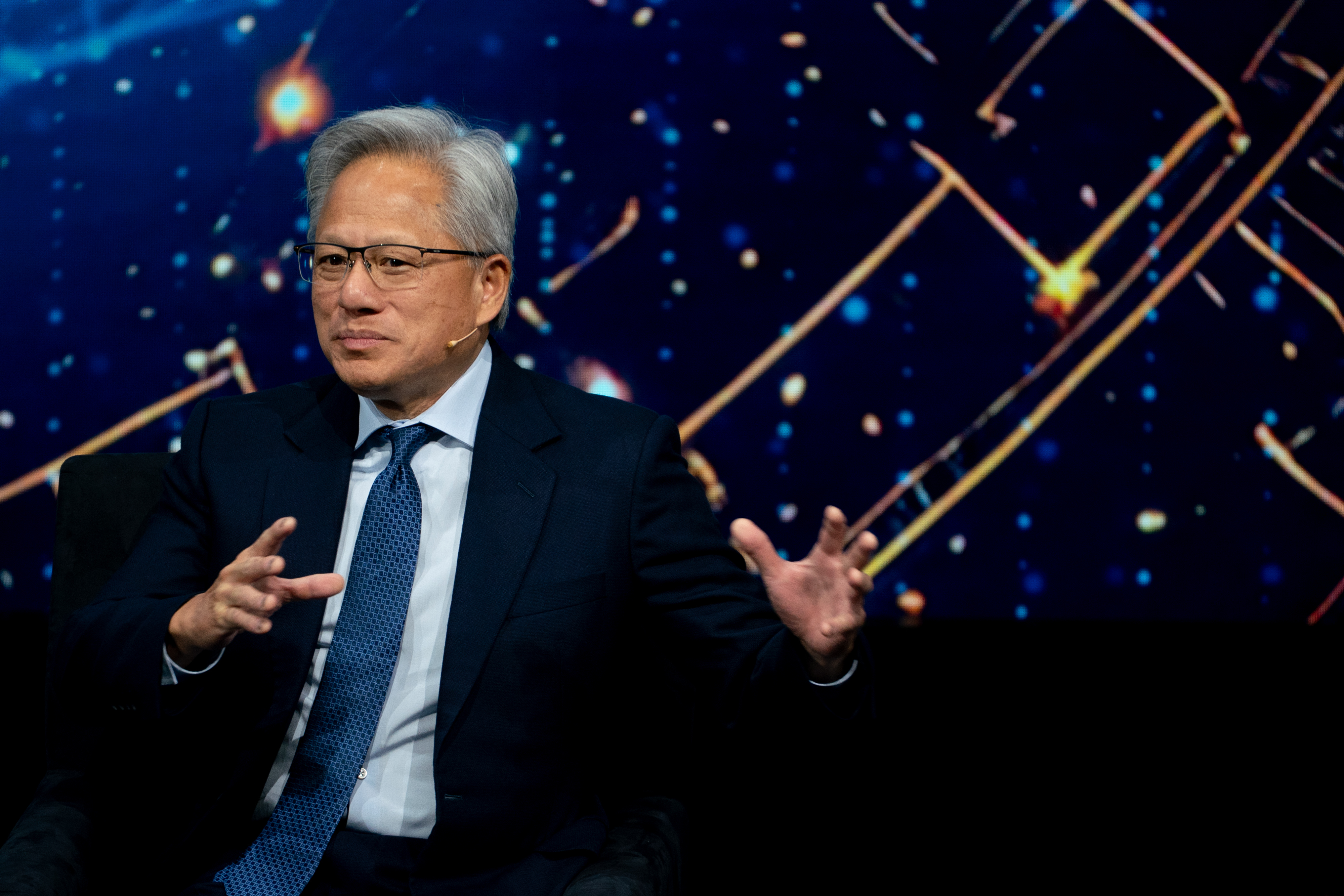
Nvidia Corp delivered a surprisingly strong revenue forecast and pushed back on the idea that the AI industry is in a bubble, easing concerns that had spread across the tech sector.
The world’s most valuable company expects sales of about $65 billion in the January quarter — roughly $3 billion more than analysts predicted. Nvidia also said that a half-trillion-dollar revenue bonanza due in coming quarters may be even bigger than anticipated.
The outlook signals that demand remains robust for Nvidia’s artificial intelligence accelerators, the pricey and powerful chips used to develop AI models. Nvidia had faced growing fears in recent weeks that the runaway spending on such equipment wasn’t sustainable.
“There’s been a lot of talk about an AI bubble,” Chief Executive Officer Jensen Huang said on a conference call with analysts. “From our vantage point, we see something very different.”
ALSO READ: SoftBank unloads Nvidia stake for $5.8b in surprise move
The upbeat commentary sent shares up about 5 percent in late trading. They had gained 39 percent this year through the close, leaving the company’s market value at $4.5 trillion.
Nvidia results have become a barometer for the health of the AI industry, and the news lifted a variety of related stocks. CoreWeave Inc, a provider of AI computing, gained more than 9 percent in extended trading. Its peer Nebius Group NV climbed more than 8 percent.

“Markets are reacting very positively to the news that there is no slack in AI momentum,” Brian Mulberry, senior client portfolio manager at Zacks Investment Management, said in a note. His firm owns Nvidia shares. “Demand for Nvidia hardware solutions remains strong,” he said.
Nvidia’s CEO had said last month that the company has more than $500 billion of revenue coming over the next few quarters. Owners of large data centers will continue to spend on new gear because investments in AI have begun to pay off, he said.
Chief Financial Officer Colette Kress went further on Wednesday, indicating that Nvidia would likely eclipse the $500 billion target.
“There’s definitely an opportunity for us to have more on top of the $500 billion that we announced,” she said on the conference call. “The number will grow.”
ALSO READ: Nvidia hits $5 trillion valuation as AI boom powers meteoric rise
The growing role of AI will help maintain demand for Nvidia’s products, Huang said. The technology is helping speed up existing computing work, such as search. And it’s about to come to the physical world in the form of robots and other devices.
Nvidia’s third-quarter results also topped analysts’ estimates. Revenue rose 62 percent to $57 billion in the period, which ended Oct 26. Profit was $1.30 a share. Analysts had predicted sales of $55.2 billion and earnings of $1.26 a share.
Nvidia’s main data center unit had revenue of $51.2 billion in the quarter, compared with an average estimate of $49.3 billion. Chips used in gaming PCs — once the company’s chief source of revenue — delivered sales of $4.3 billion. That compares with an average estimate of $4.4 billion.
The forecast for the latest quarter reflects a staggering run for the company. Sales will be up more than 10-fold from where they were in the same period just three years ago. And Nvidia is on course to deliver more annual net income than two longtime rivals — Intel Corp and Advanced Micro Devices Inc — will report in sales.

But Nvidia’s expansion has faced challenges. Some investors also have expressed concerns about the structure of the megadeals that Nvidia has struck with customers.
The transactions involve investments in startups such as OpenAI and Anthropic PBC, raising the issue of whether the pacts are creating artificial demand for computers.
Earlier this week, Nvidia and customer Microsoft Corp said they’ve committed to invest as much as $15 billion in Anthropic. The startup has also pledged to purchase $30 billion of computing capacity from Microsoft’s Azure cloud service and will work with Nvidia’s engineers on fine-tuning chips and AI models.
On the conference call, Huang was questioned about the deals with OpenAI and Anthropic. Huang said Nvidia’s investment in OpenAI, which still hasn’t been finalized, will provide a good return, he said. Backing Anthropic, meanwhile, will help establish ties with a company that hasn’t been a big user of Nvidia’s technology, he said.
ALSO READ: Nvidia to finance Musk’s xAI chips as part of $20b deal
Some Nvidia rivals have grown more optimistic that they can finally challenge the company’s dominance in AI accelerators. Earlier this month, AMD predicted accelerating growth for its AI chip business and talked up the prospects for forthcoming products.
AMD, Broadcom In and Qualcomm Inc have all announced tie-ups with large users of Nvidia’s chips. And data center operators are increasingly looking to use more in-house designs — an effort that would make them less dependent on Nvidia supply.
Huang said Wednesday that the competitive pressure remains low. More customers are coming to Nvidia after trying out alternatives than ever before, he said. The complexity of AI computer systems has put Nvidia in a strong position, Huang said.
The CEO is also pushing to spread the use of AI across more of the worldwide economy. The CEO has embarked on a globe-trotting tour to persuade government bodies and corporations to deploy his technology.
Nvidia, founded in 1993, pioneered the market for graphics chips used to create realistic images for computer games. AMD is its only remaining major rival in that business.
Nvidia built its AI dominance by adapting that same chip architecture to crunch massive amounts of data — helping researchers create software that’s begun to rival and resemble human capabilities.
The Santa Clara, California-based company still has more than 90 percent of the market for AI accelerator chips. It’s added other products to that lineup to help solidify its edge, including networking, software and other services.


